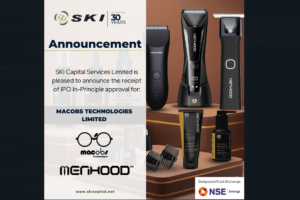
India has emerged as one of the world’s fastest growing fashion markets over the years. Traditional brick-and-mortar brands are increasingly adopting digital channels for engaging with and selling to Indian consumers while maintaining their competitive positioning. In order to help these brands understand and eliminate reasons for consumer drop-outs in their path to purchase of apparel and fashion accessories, Facebook, today, has released the next installment of the research report under its Zero Friction Future programme titled “Eliminating friction in Fashion path to purchase”. Third in the series, the reports are authored by KPMG, based on primary research and insights basis the survey conducted by Nielsen for various industry verticals, across different cities in India.
According to the findings of the report, friction accounts for 19% of consumer dropouts, in apparel category, and more than two-third of this friction is caused by media. In accessories category, friction accounts for 22% of consumer dropouts, and around two-third of this friction is caused by media. It further highlights that by 2022, 7 in 10 fashion accessory purchases in 2022 will be mobile influenced, amounting to a USD 110 billion sales opportunity, nearly half of which will be driven by Facebook. Additionally, mobile will influence 2 in 3 apparel purchases, amounting to USD 66 billion opportunity for brands, half of which will be driven by Facebook.
Commenting on the launch of the report, Pulkit Trivedi, Director, Facebook India, said, “Fashion spectrum in India has evolved so considerably, that the apparel and accessory market is projected to reach USD 102 billion and USD 155 billion individually, by the year 2022. Today, mobile has become central to the way brands market and sell their products and engage with customers end-to-end. With our Zero Friction Future report, we aim to help fashion brands adopt relevant marketing strategies and reduce friction in consumer journeys across multiple touch-points, leading to improved conversion rates and increased revenue opportunity.”
The study reveals that mobile enabled purchase journey is 14% and 25% shorter than offline journeys of apparel and fashion accessories respectively. The friction faced by consumers can be reduced with the higher use of mobile in the media mix, creating ~USD 14 bn worth of potential revenue for fashion brands by 2022. It also suggests that mobile can reduce media friction by 3 percentage points for apparel category and 4 percentage points for accessories, allowing the brands to tap into ~USD 5 & 9 billion market opportunity respectively.


